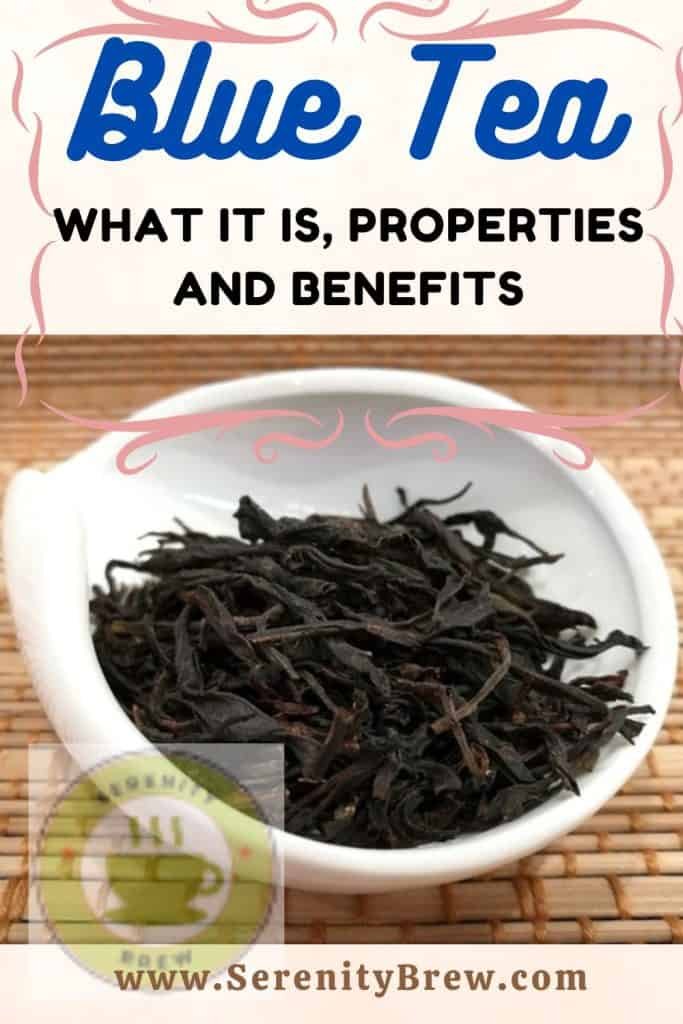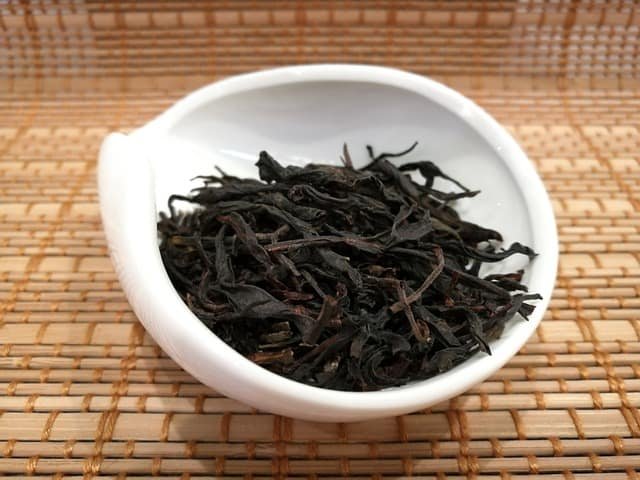
We have already heard about Blue Tea , it is not strange that lately teas have a color name, for example, white tea, red tea, green tea or black tea. In this post we will talk about blue tea , what it is, properties and benefits.
what is blue tea
Also known as blue oolong tea , it originates from Asia and is appreciated for its particular flavor, between green tea and black tea, although its aroma is more fruity and floral. However, it is not only its characteristic flavor that stands out, but its slimming effects in a natural and fast way, certain studies have shown that this is the case.
Oolong blue tea is a semi-fermented tea that contains little theine, but high amounts of tannins. In addition, its name is of Chinese origin and means “Black Dragon Tea”, although we already mentioned that it is an intermediate tea, between green and black. When a cup of this tea is tasted, its flavor and aroma transport us to the highest mountains of Taiwan or certain areas of China.
It comes from the tea tree, Camellia sinensis, which is mostly harvested in the Chinese province of Fujian, where the Ti-Kuan-Yin variant is produced and retains many of the characteristics of green tea. In addition, another variant called Formosa Oolong is known to be grown in Taiwan and has a stronger flavor than the one produced in Fujian.
The blue tea leaves have been processed to a state of oxidation that is what gives it a bluish-black color, also providing certain outstanding organoleptic characteristics. Oxidation is possible thanks to aeration and exposure of its leaves. The time used to ventilate and dry blue tea is shorter than that applied for black tea. In this sense, its oxidation will be temporary and this is what will determine its particularly intense aroma.
What properties does blue tea have?
Next, you will know everything related to blue oolong tea properties:
- antioxidant effects. Blue tea has a good amount of antioxidants that act against free radicals, help prevent chronic diseases and premature aging. Its antioxidant effects are due to its flavonoid content, a substance that protects against tissue damage.
- Reduces cell aging. Due to its flavonoid content, it slows down the action that produces cell aging.
- Control sugar spikes. According to a study, it reveals that drinking 6 cups of blue tea a day for 30 days helps control blood sugar levels.
- It is a blue tea properties It has been used for years as a natural slimming agent, in fact it has been recommended in Chinese natural medicine. Consuming blue tea helps speed up metabolism, which allows weight loss thanks to its high polyphenol content.
- Prevents cardiovascular diseases. Helps blood pressure stay balanced and lowers cholesterol levels. It also takes care of the heart and reduces the risks of myocardial attack.
- It works against cancer. Blue tea contains polyphenols, theaflavins and thearubigins that due to their antioxidant actions protect cells against free radicals.
What are the contraindications for drinking blue tea?

Blue tea itself , if taken in moderation, is very healthy, but it has certain components that can be harmful. Next, we will present you blue oolong tea contraindications :
- During pregnancy or lactation. All teas that come from Camellia Sinensis contain certain amounts of caffeine, although it is not very high, it can be harmful during pregnancy or lactation.
- If you are hypertensive. For those who suffer from high blood pressure, its consumption should be avoided or drunk in moderation.
- If you suffer from anxiety. In these cases it is contraindicated because the disorder may worsen.
- It is also not advised for those who have clotting problems because it can make bleeding worse.
- If you suffer from diarrhea. If you use to drink a lot blue tea may be worse for your condition.
- For those with irritable bowel syndrome. It can be very counterproductive to drink it while suffering from this syndrome, it could worsen the symptoms and even diarrhea.
- For those who suffer from glaucoma. The blue tea increases the internal pressure of the eye.
- If you suffer from osteoporosis. It is recommended to drink a maximum of 3 cups a day. There are studies that maintain that caffeine eliminates calcium in the urine.
- For those who have anemia problems. Tannins are more present in the blue tea that in the green Therefore, this could decrease the absorption of iron during meals, precisely because it does not allow proper assimilation to occur.
- If you have kidney problems. The blue tea as it contains oxalate, it favors the formation of grit and stones in the kidneys.
- As it contains fluoride (a substance considered to be carcinogenic) it can cause damage, although the amounts are minimal.
